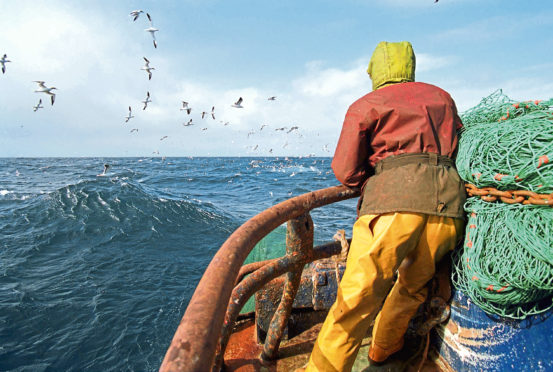Space technology and fishing may seem unlikely bedfellows but a new cross-sector partnership aims to marry the two and transform Scottish seafood.
Edinburgh company Space Intelligence, which turns satellite data into useful information for governments, companies and non-governmental organisations worldwide, has been asked to turn its attention to the Scottish fishing fleet.
According to Fisheries Innovation Scotland (FIS), the “groundbreaking collaboration between space and sea” is the first time a satellite technology company has beeen invited to support the Scottish fishing industry in this way.
Pitlochry-based FIS said the unlikely partnership highlighted the “innovative, forward-thinking nature of a traditional sector often condemned as old-fashioned”.
With Scotland being a global leader in seafood production, as well as a rising star in space exploration and satellite technology, the country is well-positioned to foster novel collaborations between the two, the public-private partnership added.
“This project is the first of its kind,” FIS executive director Kara Brydson said, adding: “The Scottish seafood industry is modern and forward-looking, and we’re excited to learn from Scotland’s satellite data analysts to support our future fisheries.”
Space Intelligence co-founder and chief executive Murray Collins said there were numerous ways in which satellites could drive transformational change in the fishing industry – from cutting-edge “agile space”, where satellites are launched to perform bespoke research for specific challenges, to tracking vessels and mapping.
Mr Collins added: “The key is that our research is driven by the challenges faced by the sector, rather than the technology itself. We want to explore the possibilities from systems that already exist, rather than reinvent the wheel.”
The project, due to complete at the end of May, is initially aimed at helping fishers and policy-makers to understand what is possible.
It could lead to future collaboration between the fishing industry and satellite providers, on projects ranging from monitoring fish stocks to improving fisheries management, safety at sea and helping scientists understand the effects of climate change on the ocean.
As a company mainly focused on forest conservation and land-based carbon stores, working in the marine sector will be a new venture for Space Intelligence.
Mr Collins said: “Technology obviously has a role to play in supporting the fisheries sector, as it looks to become more profitable, more sustainable and is improving people’s livelihoods.
“There is a gap between what satellite technology currently does, and what the possibilities are. We will conduct blue-sky research, by reviewing what tech is out there and what could conceivably be developed to support the sector.”
FIS, which brings together seafood experts, scientists and the Scottish Government to champion practical innovation in fishing, is behind a number of innovative projects – from the digitalisation of vessels to quantifying the fleet’s carbon footprint – to bolster the sustainability and prosperity of the sector.










